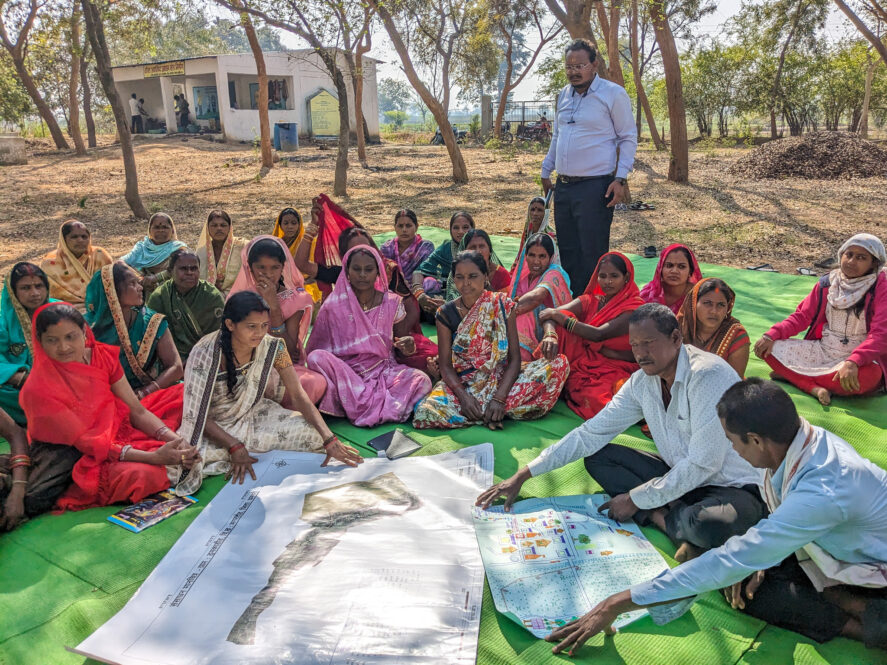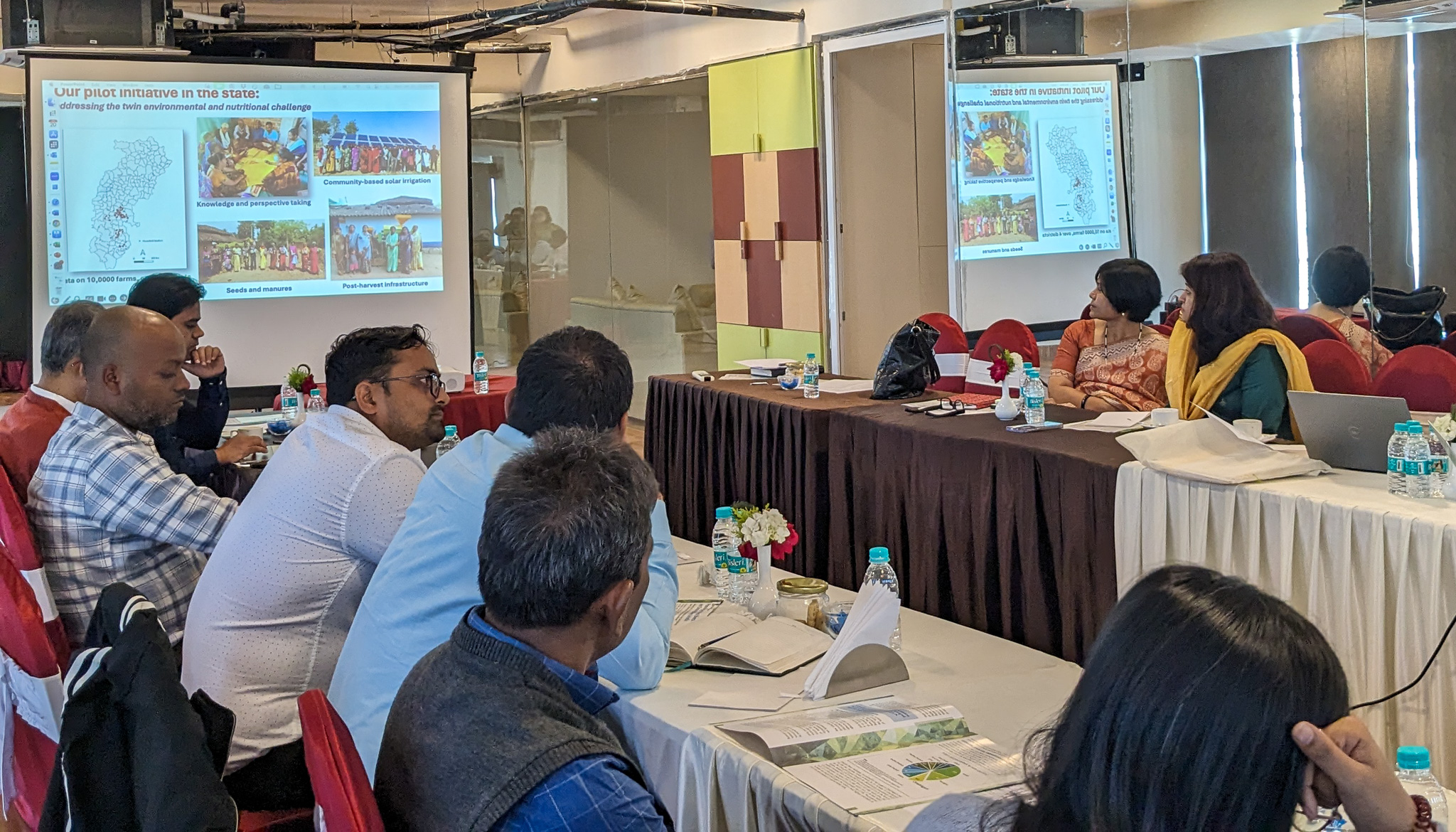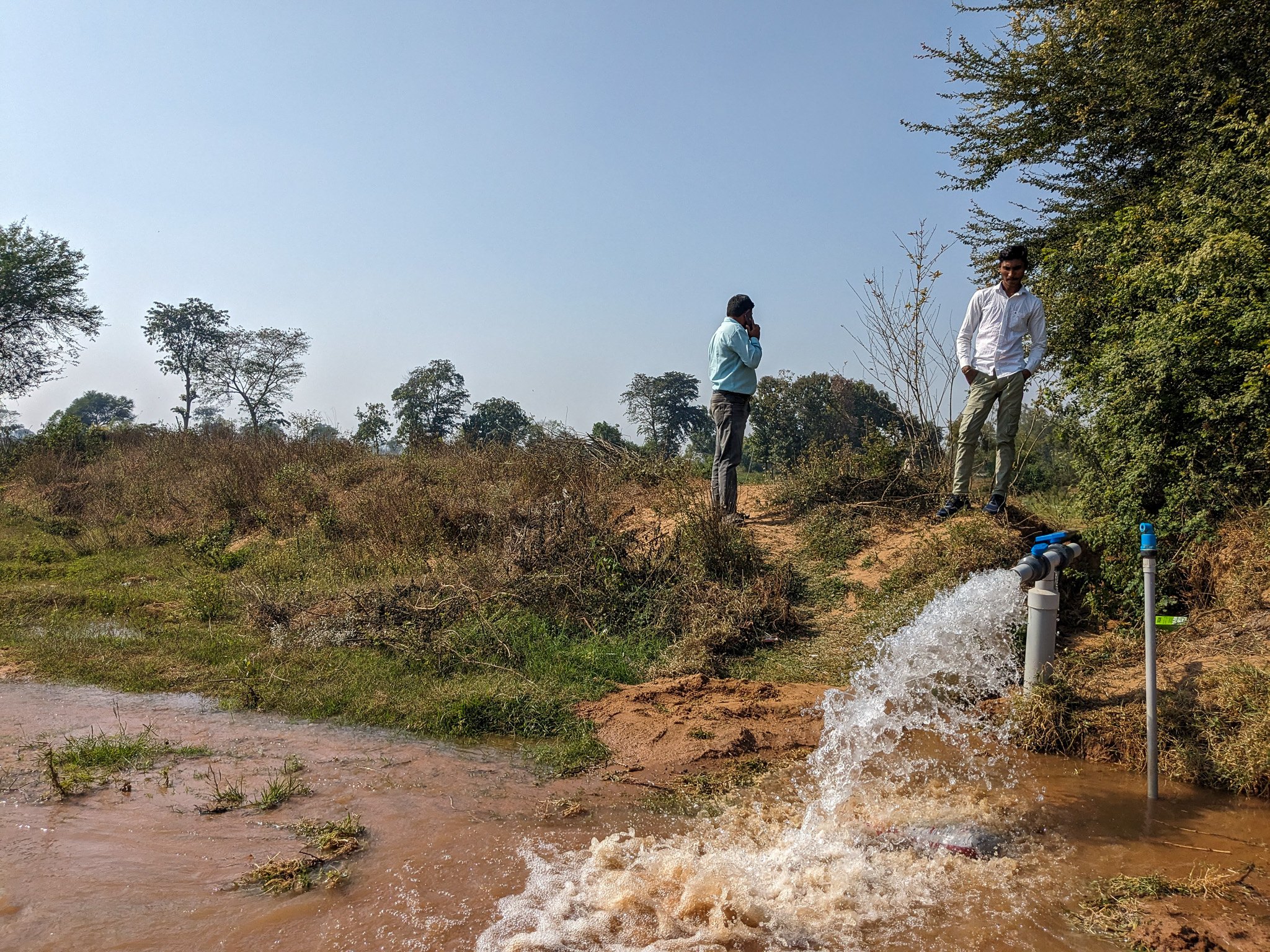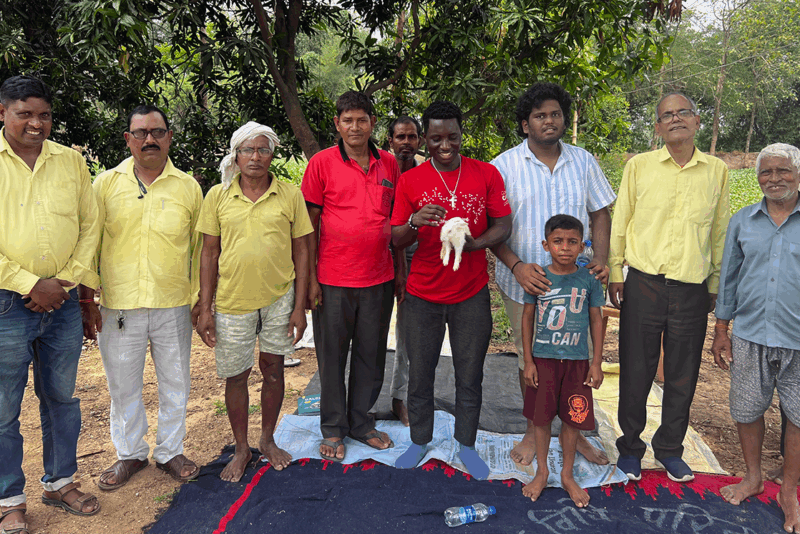Key Takeaways from a Workshop on Climate-Resilient Agriculture in Chhattisgarh

As climate change advances, India’s rice-and-wheat-heavy agricultural sector is at risk of weakened production because of temperature changes and more frequent extreme weather events, like droughts. In an effort to make Indian agriculture more climate-resilient, the Tata-Cornell Institute for Agriculture and Nutrition (TCI) and PRADAN are collaborating on a project in Chhattisgarh aimed at finding credible pathways to transition from rice-centric agriculture to more nutrient-sensitive and environmentally sustainable cropping systems. A key component of the project is a randomized controlled trial conducted across 80 villages in four districts. Over two years, the project has made notable strides in creating the necessary ecosystem for this shift, including community-level capacity-building initiatives, the installation of solar lift irrigation systems and the establishment of small-scale processing units for pulses and oilseeds.
As part of these ongoing efforts, TCI and PRADAN organized a high-level consultative workshop on January 20 in Raipur, Chhattisgarh. The event brought together key government departments—agriculture, horticulture, forests and climate change, and Panchayati Raj—to discuss the vital role of agricultural diversification in enhancing climate resilience and improving nutrition security in the state.
The workshop saw participation from state government officials, including:
- Shahla Nigar (Agriculture Production Commissioner and Secretary, Indian Administrative Service, Department of Agriculture)
- Jagdishan S (Director, Indian Forest Service, Department of Horticulture)
- Arun Pandey (Additional Principal Chief Conservator of Forests, Indian Forest Service, Department of Forests and Climate Change)
- Rajesh Rathore (Managing Director, Chhattisgarh State Organic Certification Agency, Department of Agriculture)
- Tarun Deshmukh (Additional Director, Department of Panchayati Raj).

During the workshop, TCI researchers presented an overview of the Transformation of Agricultural Systems for Climate Resilience project to government officials from Chhattisgarh. (Photo by TCI)
The TCI team, led by Director Prabhu Pingali, and representatives from PRADAN, contributed to an engaging discussion focused on policy integration and strategic interventions to discuss climate change and agricultural diversification strategies. This opportunity also allowed TCI to present findings from its ongoing research in the state and identify collaborative ways to scale up our solutions.
Discussions and key takeaways
TCI researchers set the stage with a presentation on climate change and agriculture, highlighting the institute’s research on agricultural diversification and its potential to improve climate resilience and nutritional outcomes. The presentation emphasized Chhattisgarh’s status as India’s “rice bowl” and the challenges posed by the dominance of paddy cultivation. Currently, rice accounts for nearly 40% of the state’s agriculture-related emissions, largely driven by procurement policies favoring paddy over other crops. The presentation also underscored the decline of traditional climate-friendly crops, such as millet, and the agricultural sector’s growing vulnerabilities due to climate change.
TCI-PRADAN initiative on climate-smart agriculture
TCI and PRADAN presented early findings from an ongoing pilot initiative—working with 10,000 households across 80 villages—in four southern districts of Chhattisgarh, which includes:
- Knowledge sharing: Engaging farmers on the benefits of diversification and climate-smart practices
- Market support: Facilitating access to seeds, manures, and processing infrastructure for non-paddy crops
- Irrigation enhancement: Promoting community-based solar and lift irrigation systems to enable diversification
Early results from the initiative indicate a positive shift in cropping patterns, with a reduction in average paddy cultivation from 2.94 to 2.36 acres per household between 2023 and 2024 and an increase in alternative crops like oilseeds.

As part of the Transformation of Agricultural Systems for Climate Resilience project, TCI and PRADAN built solar-powered lift irrigation systems for farmers. (Photo by TCI)
The project team discussed how the reduction in the area under paddy through diversification could potentially reduce carbon emissions. These arguments are built upon a scenario-based analysis indicating that reducing the paddy area by 25% in Chhattisgarh could lead to a nearly 3% reduction in India’s total rice-related emissions. This transition could have a huge economic implication through the expansion of more profitable and climate-resilient cropping options, in addition to improving the availability of nutrient-rich foods in the state.
Challenges to crop diversification
Despite the potential benefits, experts at the consultation highlighted significant economic and policy barriers to diversification. Socioeconomic challenges include the predominance of smallholder and marginal farmers with less than two hectares of land, limited employment opportunities, and a preference for paddy due to its assured returns. Policy and market-related barriers include strong policy support for paddy, limited procurement mechanisms for alternative crops, and farmers’ reluctance to shift due to market uncertainties. Participants also noted the role of infrastructure constraints, particularly irrigation systems designed primarily for paddy, as an important impediment to the diversification efforts.
Policy integration opportunities and actionable interventions
Workshop participants identified several policy opportunities to support diversification, including leveraging existing schemes such as the Chhattisgarh Millet Mission, oilseed procurement by National Agricultural Cooperative Marketing Federation of India (NAFED) and National Cooperative Development Corporation (NCDF), and district-level paddy reduction targets. Proposed government interventions included:
- Providing zero-interest, mid-term loans with extended repayment periods for high-value crops
- Removing restrictions preventing farmers from utilizing multiple government schemes at once
- Investing in infrastructure and value chain development, such as setting up dedicated mandis for vegetables
- Increasing credit limits for horticulture from the current ₹70,000 to ₹5 lakh per acre
- Leveraging the Digital Crop Survey to enable better local-level planning and diversification targeting
- Aligning diversification efforts with the net-zero targets outlined in Chhattisgarh’s 2024 State Action Plan on Climate Change
To operationalize these recommendations, a focused implementation approach was discussed:
- Targeting specific blocks with intensive diversification efforts in 10 villages per block
- Concentrating resources on 10 hectares per village with comprehensive support
- Leveraging success stories to demonstrate the profitability of alternative crops
- Strengthening coordination across agriculture, horticulture, forest and irrigation departments to create an integrated support system
Next steps and the way forward
The workshop concluded with a commitment from the participants to explore collaboration and data-sharing mechanisms. Moving forward, strengthening farmer incentives, improving credit access and integrating diversification into state policies were recognized as critical to scaling up agricultural diversification initiatives.
The insights from this consultative workshop provide a strong foundation for shaping climate-resilient agricultural policies in Chhattisgarh. With sustained collaboration between government departments, research institutions and grassroots organizations like PRADAN, a transition toward sustainable, diversified agriculture is within reach.
Aishwarya Gawali is an associate researcher at the TCI Center of Excellence in New Delhi, India.
Pallavi Rajkhowa is an associate research fellow at the TCI Center of Excellence in New Delhi, India.
Andaleeb Rahman is a research associate at TCI.
Featured image: TCI researchers hold a focus group discussion with farmers using solar lift irrigation in Chhattisgarh. (Photo by TCI)





